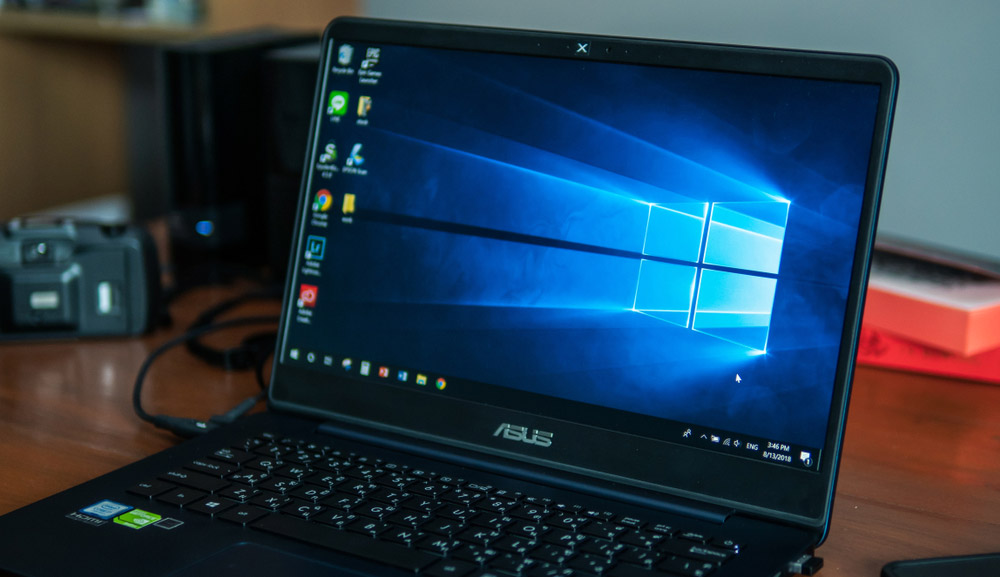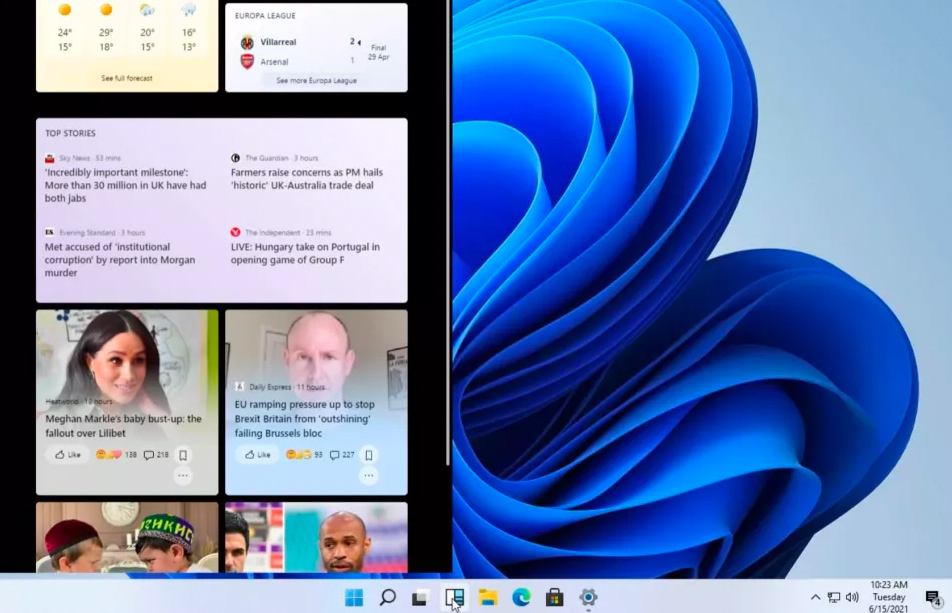Windows 11 looks like a solution in search of a problem
Windows 11 looks like a solution in search of a problem

This week, we got our first glimpse at Windows 11, thanks to an unexpected leak on a Chinese server. While nosotros tin can debate the morality and practicality of downloading Windows eleven and trying information technology for yourself (you shouldn't do information technology, for the record), what we can say for certain is that the new version of Windows will look at lot sleeker than Windows ten. Long lists of programs and complex menus are out; rounded edges and widgets are in. There's only one problem: Windows doesn't really need any of these things.
Coming up with a new version of a plan is always a difficult balancing deed. Alter likewise much, and the program becomes incomprehensible. Change besides little, and at that place's no existent reason to upgrade at all. I'll reserve judgment on Windows xi's functionality until I can try information technology for myself. But from the screenshots, it seems clear that Microsoft wants to mimic a MacOS aesthetic. My colleague Henry T. Casey pointed out that the artful may be closer to ChromeOS, but the point stands either way: Microsoft thinks Windows needs to look more than futuristic and minimalist.
- These are the best Windows laptops you can buy right now
- Amazon Prime Day deals 2021 — date and what to await
- Plus:Here's why you lot shouldn't install the leaked version of Windows 11
The trouble is, Windows users – to the best of my cognition – don't really want an OS that resembles an Apple store. A fashionable interface has never been the big selling point of Windows. Rather, Windows absolutely excels in two areas: straightforward navigation, and robust under-the-hood options. The more Microsoft tries to downplay these elements, the more information technology gets abroad from the eye of the Windows experience.
How I learned to stop worrying and love Windows 95

I learned how to utilize a computer with DOS, simply it wasn't until Windows 3.one that I started to sympathise what I was doing. Windows made navigation comprehensible in a manner that DOS didn't, associating programs with pictures and locations rather than arbitrary lines of lawmaking. But it wasn't until Windows 95 that Microsoft codification the Windows experience that we all know and love/hate/tolerate today.
Windows 95 introduced the Beginning bill of fare, the taskbar, the simplified desktop shortcut, and fifty-fifty the clock in the lesser-correct corner. The fundamental visual construction of Windows hasn't changed since Windows 95 (with a few notable digressions). If you were to grab someone born in 2010 and plop them in forepart of a Windows 95 PC, they'd have a pretty good idea of how to run programs, salvage documents, and detect files. (They might wonder why they have to log onto the Internet with Netscape, granted, and why a talking paperclip is walking them through Microsoft Word.)
If anything, in designing Windows 95, Microsoft did its task as well well. The company wanted to create the most comprehensible, straightforward Os possible – and it succeeded correct out of the gate. Generally speaking, the best versions of Windows so far are the ones that have stayed true to Windows 95'due south blueprint. These include Windows XP, Windows 7 and Windows 10. Conversely, the most problematic versions of Windows so far are the ones that have tried to reinvent the wheel. These include Windows ME, Windows Vista and Windows eight.
Of course, it's not every bit though Microsoft could have but stopped short afterward Windows 95. OSes need constant updates – not but for usability, but for hardware compatibility, software optimization and security reasons as well. Furthermore, some Windows additions over the years have made the OS genuinely ameliorate, including the search bar and the pictorial Documents folder. Today, it's much easier to connect to the Cyberspace, add together a second brandish, hook up a printer, or take a screenshot than it was dorsum in 1995.
All the same, I recollect it's fair to say that Windows 95 pioneered the current appearance and functionality of the Windows Bone. This formula has needed tweaking over the years, but never a radical redesign.
Windows xi form and role

What we know nigh Windows 11 is even so fairly express, and the program isn't out nonetheless. As such, the Windows 11 nosotros eventually install on our Tom's Guide PCs could ultimately be very different than the 1 nosotros've seen. Furthermore, Windows has e'er been a very tweakable Bone, and I doubt that 11 volition break that trend. If users want to make Windows 11 look and behave more like Windows 10, I'm near certain they'll be able to.
Yet, the default experience looks pretty different from what we're used to. From File Explorer's rounded edges, to the centered taskbar, to the non-scrolling Start card, to the middle-catching widgets, Windows 11 arguably looks like a smartphone OS. The focus is very much on showing you lot a limited number of options and at-a-glance information, all wrapped in a sleek interface.
I won't go into excruciating detail virtually how Windows 11 looks; suffice it to say that it's pretty different from what we're used to. The trouble isn't that Windows 11 is different, nonetheless; information technology's that it seems to favor form over office.
Windows x may be a lot of things, merely in its default state, it's hardly a pretty Bone. And yet, that doesn't thing, because it's ridiculously like shooting fish in a barrel to do what you need to practise with it. You e'er know that if y'all install a new plan, it will be somewhere in the trusty Start menu at the lower-left corner of the screen. And if something goes wrong, you know that y'all can swoop into the Control Panel, or the Properties tab, or the registry, and fix it yourself (usually with a judicious application of Google-fu).
Is Windows clunky? Sure. Because Microsoft hasn't really removed legacy tools, you could easily find yourself wading through 3 or 4 different sound menus if your headphones don't work, or wading through a complicated string of Command Prompt code just because you desire to bypass the login screen. But on the other hand, information technology'due south skilful to take those options at your disposal. It gives you a lot more control over Windows than you'd accept over, say MacOS or Android.
In the cease, these observations may be little, peculiarly because Microsoft is unlikely to alter the underlying structure of Windows anytime soon. With a picayune tweaking, I'm certain the Start menu volition be just as you left it. And while File Explorer's rounded edges feel a trivial hipsterish, they don't compromise the organization'southward functionality in whatsoever way.
Windows eleven looks glossy and polished. Just the core force of Windows has always been in its unproblematic navigation. Microsoft nailed that aspect dorsum in 1995; let's promise the company tin can do so again in 2021.
Source: https://www.tomsguide.com/news/windows-11-navigation-appearance
Posted by: deanbeeldrer.blogspot.com


0 Response to "Windows 11 looks like a solution in search of a problem"
Post a Comment